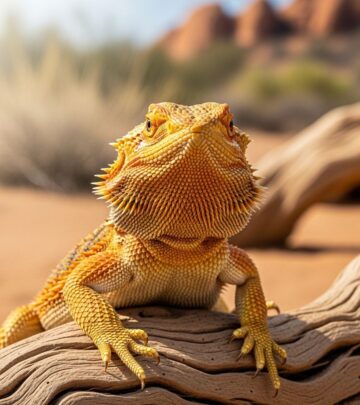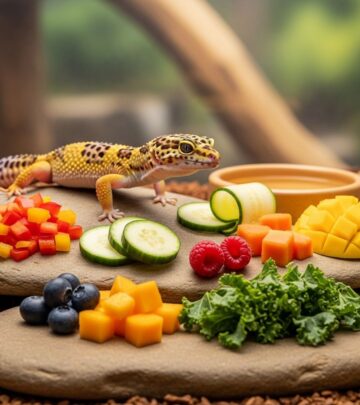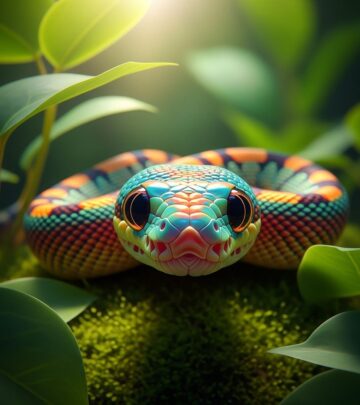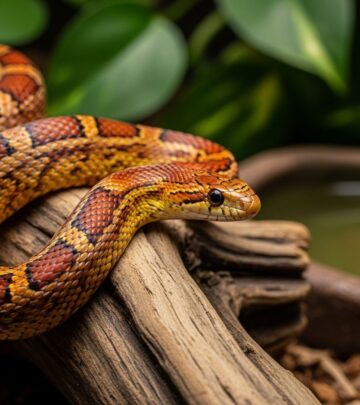A Complete Guide to What Bearded Dragons Eat
A balanced mix of insects, greens, and treats keeps your scaly companion healthy.
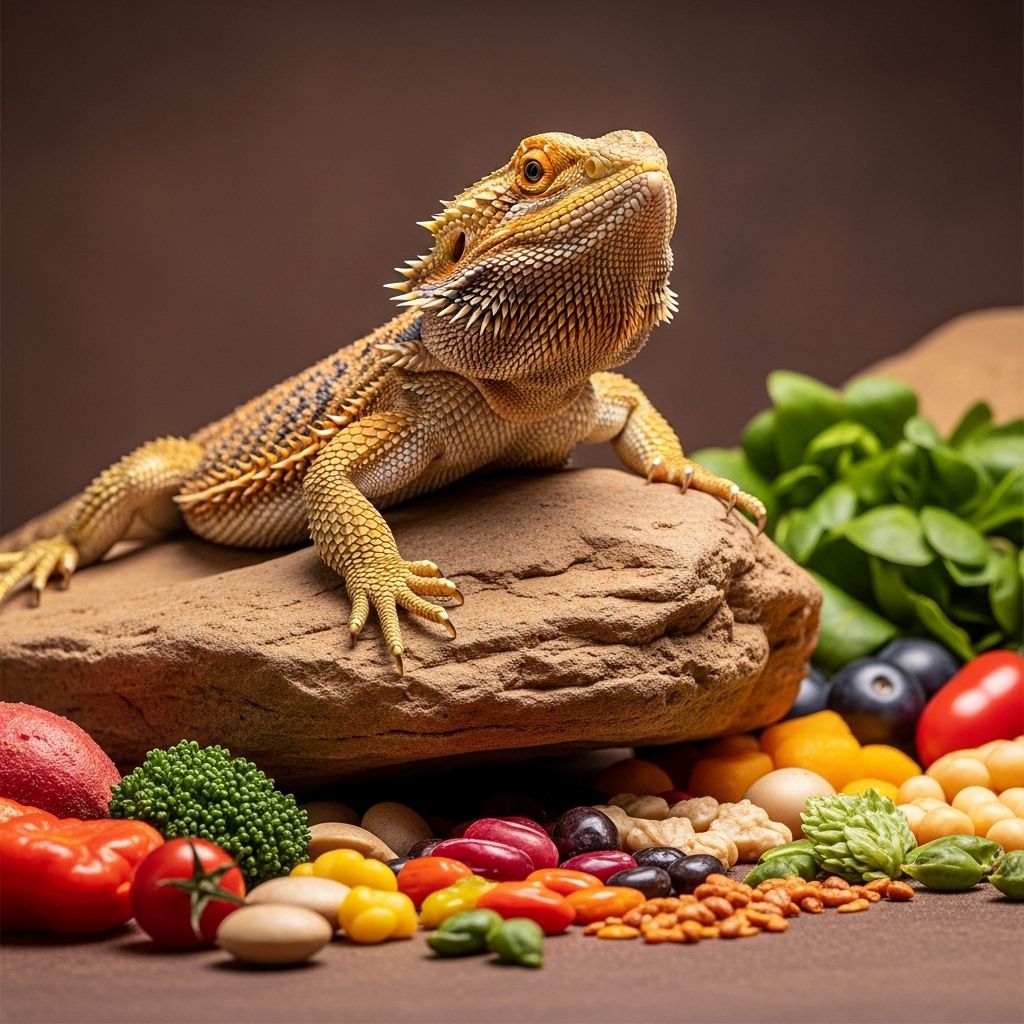
Image: HearthJunction Design Team
Bearded dragons are captivating companion reptiles with unique dietary needs that evolve as they grow. Whether you’re caring for a young hatchling or a mature beardie, understanding what to feed your pet is essential for their health, longevity, and happiness. This comprehensive guide provides everything you need to know about bearded dragon nutrition, safe foods, feeding schedules, and expert tips for satisfying your scaly friend’s appetite.
Bearded Dragon Diet Overview
Bearded dragons are omnivorous reptiles, meaning they eat both plant-based and animal-based foods. However, the ratio of plants to animal protein changes significantly as they age. Getting this balance right is crucial to avoid health problems and meet all their nutritional requirements.
- Juveniles (under 1 year): Diet should be around 80% insects and 20% plant matter.
- Adults (over 1 year): Reverse the ratio: 80% plant matter and 20% insects.
Consistency in this dietary balance ensures proper growth, prevents obesity, and keeps your dragon active and engaged.
What Foods Can Bearded Dragons Eat?
Your bearded dragon’s diet can be varied and interesting! To give them the best chance at thriving, provide a rotation of the following food groups.
1. Insects and Animal Protein
Insects are rich in protein and vital for a growing dragon, but even adults benefit from occasional bugs. Here’s a quick look at safe choices:
- Crickets (staple, easy to digest, readily available)
- Mealworms (offer sparingly, higher in fat)
- Dubia roaches (nutritious and highly recommended for all ages)
- Hornworms, phoenix worms, black soldier fly larvae (excellent variation and treats)
- Superworms (for adults only due to their larger size)
Always feed insects that are no larger than the space between your bearded dragon’s eyes to prevent choking and impaction. And avoid wild-caught insects, as they may carry parasites or harmful pesticides.
2. Vegetables and Leafy Greens
Plant foods are the mainstay for adult dragons, offering fiber, vitamins, and minerals. Rotate a variety each week for optimal nutrition.
| Leafy Greens | Other Vegetables |
|---|---|
| Collard greens | Bell peppers |
| Mustard greens | Squash (butternut, acorn, spaghetti) |
| Turnip greens | Sweet potato (cooked, peeled) |
| Dandelion greens (pesticide-free) | Green beans |
| Bok choy | Zucchini |
| Escarole | Peas |
| Kale (occasionally) | Carrot (grated) |
| Endive | Okra |
| Swiss chard | Broccoli (sparingly) |
| Watercress | Asparagus |
Note: Avoid feeding iceberg lettuce or light green leafy lettuces; these provide little nutrition and too much water, risking diarrhea.
3. Fruits (Occasional Treats)
Fruit adds variety but should be fed sparingly (no more than 5–10% of total diet) due to sugar content. Safe options include:
- Papaya
- Mango
- Blueberries
- Strawberries
- Banana (small amounts)
- Melon
- Apple (peeled and sliced, no seeds)
- Pear
- Watermelon
Always chop fruit into bite-sized pieces and remove seeds or pits, as they can be toxic or cause digestive issues.
4. Commercial Diets
Commercially formulated bearded dragon pellets and mixes are available. These products can supplement a varied diet but should not fully replace fresh produce and live food. When choosing commercial foods:
- Check ingredients for high vegetable content and avoid excessively processed fillers.
- Soften pellets with water if your dragon is hesitant to eat them dry.
Foods to Avoid: Unsafe and Toxic Foods
Certain foods can make your bearded dragon sick or be outright deadly. Always avoid the following:
- Avocado (contains oxalic acid, which is toxic)
- Rhubarb (highly toxic to reptiles)
- Onions, garlic, chives
- Wild-caught insects (may carry pesticides or parasites)
- Fireflies or any insects that glow (poisonous)
- Dairy products (bearded dragons cannot digest lactose)
- Citrus fruits (such as orange, lemon, lime; too acidic and can burn mouth or cause GI distress)
- Bread, processed foods, sweets
How Much and How Often to Feed a Bearded Dragon
| Age | Bugs/Insects | Plant Foods | Feeding Frequency |
|---|---|---|---|
| 0–4 months (Hatchling) | 80% | 20% | 2–3 times per day |
| 4–12 months (Juvenile) | 60% | 40% | 2 times per day |
| Over 1 year (Adult) | 15–20% | 80–85% | Once daily or every other day |
- Feed small portions that your dragon can eat within 10–15 minutes, removing leftovers to prevent spoilage.
- Always provide fresh, clean water in a shallow bowl, even if they do not seem to drink often.
Calcium and Vitamin Supplementation
Bearded dragons require extra calcium and vitamins for bone health, especially since they are prone to metabolic bone disease in captivity without proper supplementation. Supplement protocols include:
- Calcium powder without vitamin D3: Dust insects for every feeding for young dragons, every second feeding for adults.
- Multivitamin powder: Offer 1–2 times weekly, lightly dusted on live food or salad.
- UVB lighting: Provide appropriate UVB lamps in the habitat for 10–12 hours/day to support vitamin D3 synthesis and calcium absorption.
How to Prepare and Serve Food
To encourage healthy eating and reduce risk of illness:
- Wash all greens, vegetables, and fruits thoroughly before serving.
- Chop or grate food into small, manageable pieces based on the dragon’s size.
- Rotate ingredients weekly for dietary variety.
- Feed live insects in a separate container or feeding tank to avoid substrate ingestion.
- Remove uneaten food promptly.
Signs of Healthy vs. Unhealthy Diet
Watch for these indicators to ensure your bearded dragon is thriving:
| Signs of Good Health | Possible Problems |
|---|---|
| Alert, bright eyes | Sunken eyes |
| Active and alert behavior | Lethargy or hiding constantly |
| Firm, regular bowel movements | Runny stools or constipation |
| Strong, steady appetite | Lack of interest in food |
| Well-filled tail base, not thin | Weight loss, thin tail base |
If in doubt about your dragon’s diet or behavior, consult an exotics veterinarian promptly.
Frequently Asked Questions (FAQs)
Can bearded dragons eat spinach?
Spinach should be avoided or fed rarely since it binds calcium, making it harder for your dragon to absorb this vital nutrient.
Is it safe to feed bearded dragons worms?
Commercially raised mealworms, superworms, and hornworms are safe when fed in moderation. Avoid wild-caught worms due to parasite risk.
How often should I change my bearded dragon’s diet?
Variety is key! Rotate vegetables, greens, and insect sources every week, but keep the overall ratio balanced for your dragon’s age.
Can I feed my bearded dragon flowers?
Certain pesticide-free flowers like hibiscus, dandelion flowers, and nasturtium are safe and can be a fun treat.
What should I do if my bearded dragon stops eating?
Loss of appetite can mean stress, sickness, or husbandry issues. Check your dragon’s enclosure setup, and contact a reptile veterinarian if the problem persists more than a couple of days.
Are supplements really necessary if I feed a varied diet?
Yes. Even with a great diet, supplements and UVB lighting are needed to prevent bone diseases common in captive reptiles.
Conclusion
The best bearded dragon diet is balanced, diverse, and adapted to your pet’s age and needs. Regularly offer a mix of safe greens, veggies, limited fruit, and high-quality insects. Avoid dangerous foods, maintain the essential ratio of plant to animal material, and always supplement with calcium and vitamins. Careful attention to your dragon’s diet will keep them thriving for years to come!
References
- https://www.redhillsvet.com/site/blog/2023/04/15/bearded-dragon-diet
- https://www.petmd.com/reptile/nutrition/what-do-bearded-dragons-eat
- https://vcahospitals.com/know-your-pet/bearded-dragons-feeding
- https://www.fallsroad.com/site/tips-resources-blog-baltimore-vet/2022/01/14/bearded-dragon-diet
- https://dragonsdiet.com/blogs/dragon-care/the-complete-bearded-dragon-diet-plan
Read full bio of Shinta







